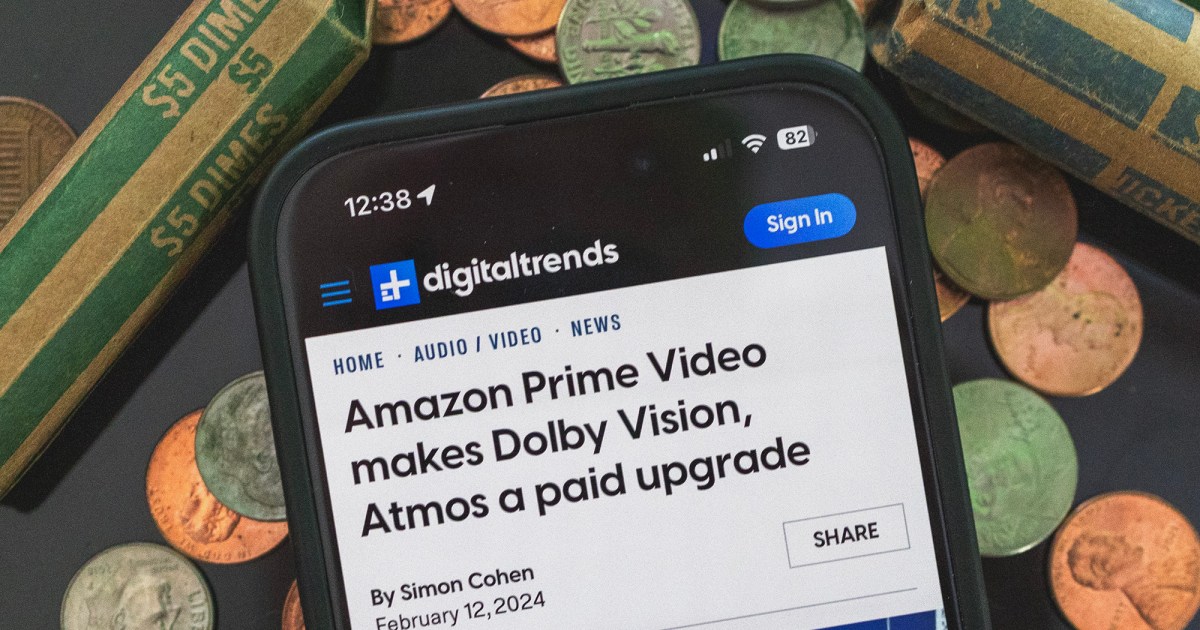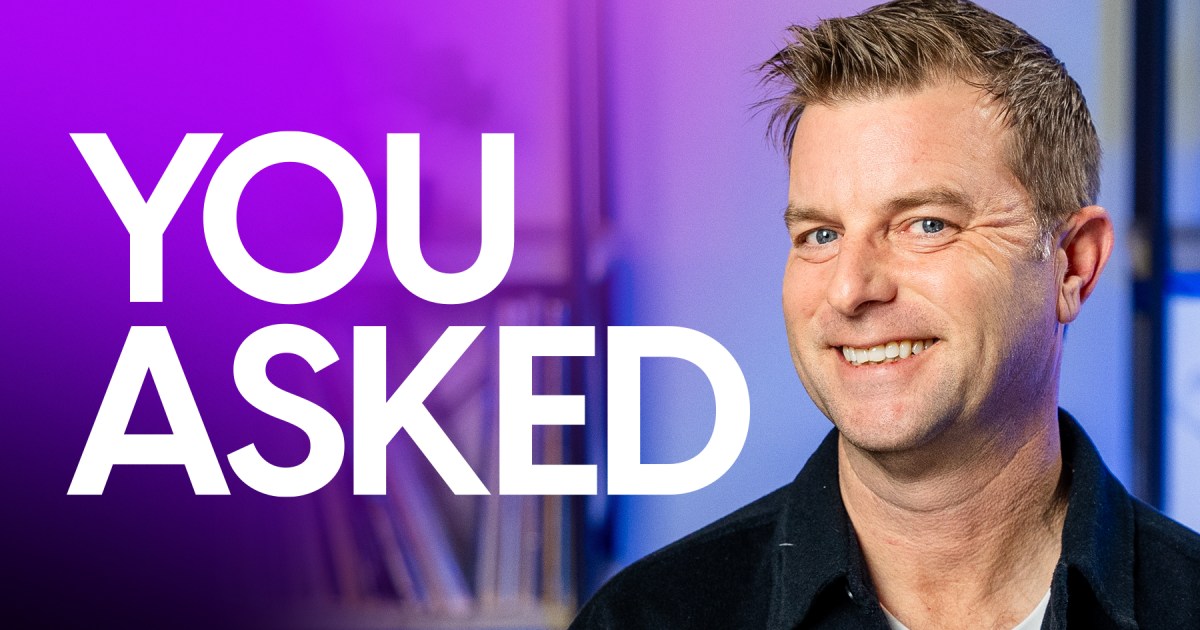
On this You Requested: Why purchase a costlier Blu-ray participant? Blu-ray gamers vs. sport consoles. Are 70-inch TVs any good? Is all eARC HDMI 2.1, and is all HDMI 2.1 eARC? And can we ever get QD-OLED with MLA?
Are all Blu-ray gamers the identical?
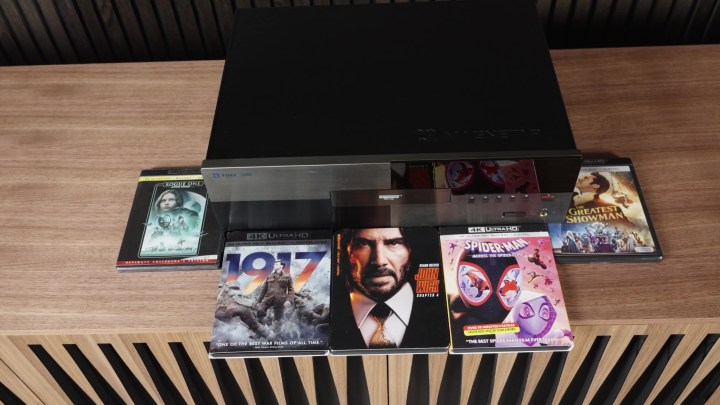
Mike B. writes: I’ve seen some discussions on Twitter/Reddit about various image high quality amongst 4K UHD gamers. Ignoring construct high quality, HDR codecs, additional options, and so forth., shouldn’t all gamers be capable to learn the info from the disc and ship the “pure” sign to the AVR/TV with none situation? If the participant isn’t doing any type of processing, why would there be any distinction in image high quality?
To begin with — and please don’t misunderstand me once I say this as a result of I’m not attempting to attenuate the validity of your query — however this query mattered much more just a few years in the past than it does now.
The explanation? We simply don’t have a variety of manufacturers or fashions to select from anymore. Anybody nonetheless making a Blu-ray participant is making a reasonably first rate participant. We’ve Sony, Panasonic, and LG as the massive manufacturers, after which we now have specialty gamers like Reavon and Magnetar. (RIP, OPPO.)
Nevertheless, we do nonetheless see some vary throughout the few choices in the marketplace. What would possibly make one higher than one other by way of image high quality? Frankly, not quite a bit. Nevertheless, the distinction in image high quality that may exist resides within the decoding course of. A Blu-ray disc is filled with encoded video that must be decoded earlier than it may be despatched alongside an HDMI cable to your TV. Decoding has much less influence on video sign high quality than processing — I’m attending to that — however it could have an effect. A really tiny, miniscule, difficult-to-perceive influence.
Processing is a unique story. Essentially the most noticeable distinction in processing will likely be in de-interlacing Blu-ray discs and upscaling something 1080i and decrease. However that’s provided that you enable the participant to do any processing in any respect. In case your TV is sweet sufficient, its processing will likely be higher than your disc participant. When you’ve got a lower-end TV, the participant’s processing could also be higher. However it’s uncertain you’d see a distinction on a lower-end TV.
No, many of the worth distinction between gamers will likely be justified elsewhere, outdoors of video sign high quality. The construct high quality, together with the drive mechanism, the transport tray, and the chassis. Or it could be within the audio part. A premium participant might have higher digital-to-analog audio converters, which might repay if you happen to use the participant for CD, DVD Audio, or SACD playback. You may additionally discover a distinction in start-up and disc loading occasions. Typically, costlier gamers usually tend to last more, function extra quietly, and function extra rapidly. They might additionally simply be much less buggy as a result of they use a extra highly effective chipset.
Blu-ray gamers vs. sport consoles

Following up on that query is one other one about Blu-ray, coming from Josh Collins, who writes: You talked about beforehand how getting a devoted 4k Blu-ray participant is a lot better than the PS5 and the Sequence X. I see this sentiment expressed all around the Web. However in addition to the dearth of Dolby Imaginative and prescient help for the sport consoles, what makes them totally different/higher? And would the Sony x700m be that a lot better than a PS5, or do I have to spend far more for a very good participant?
To not be argumentative, however did I actually say a lot higher? I really feel like I didn’t. But when I did, I could have overstated the distinction. I do keep in mind saying the PS5 is a lot better than the Xbox, although. And I stand by that. The PS5 handles 24 frames per second content material much better than the Sequence X, which exhibits extra judder.
If you wish to put a Blu-ray or 4K Blu-ray disc in both of those machines and watch that film, you’ll be capable to try this. You’ll even get fundamental HDR and, to some extent, Dolby Atmos. Put the disc in, watch the film — job completed.
Nevertheless, devoted 4K Blu-ray gamers will provide higher decoding — which we simply talked about — and, if you need them to, higher processing than both of the consoles. Will you discover the distinction? I’m unsure, particularly between the PS5 and a devoted participant.
The place the variations begin changing into extra noticeable is that neither console will play again discs in Dolby Imaginative and prescient. And, final I heard, neither performed again HDR 10+, not that there are all that many discs with HDR 10+ on them.
Additionally, whereas getting Dolby Atmos out of a PS5 is fairly simple, getting it out of an Xbox is extra of a trouble. It’s a must to obtain an app for it, and I do know on the Xbox One it wasn’t actual Dolby Atmos.
Talking of audio, neither of them is an efficient CD participant, not to mention an SACD participant. So, if you need your disc participant to do greater than 4K Blu-rays, I’d say get a devoted participant. Finish of story.
70-inch TVs
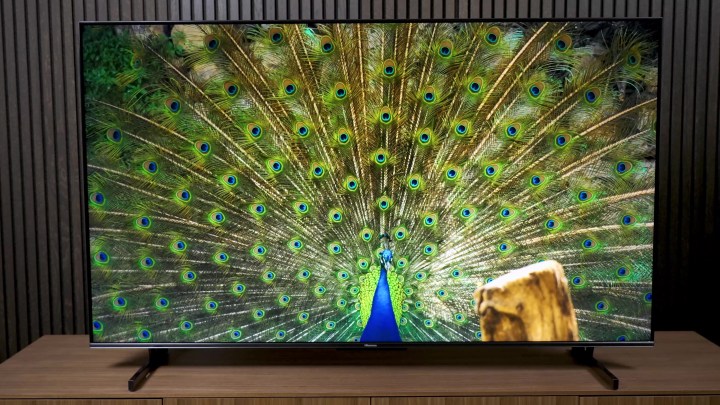
Jeffrey Hein writes: I’ve all the time heard you need to go for the most important TV that is smart in your area. I’ve lately moved, and the brand new room configuration would work completely with a 70-inch TV. Are there any prime manufacturers or fashions obtainable on this dimension that you just advocate, or is it virtually all the time the higher choice to stay with 65 inches?
This query is deceivingly difficult. Initially, I believe most folk would let you know that if cash just isn’t an object, purchase the bigger model of a TV inside a mannequin collection. As an example, if you wish to get a TCL QM8, get a 75-inch QM8 as an alternative of a 65-inch QM8.
More often than not, the bigger model of a given mannequin will likely be nearly as good because the smaller model. Most of the time. Generally, because of panel provide issues, a producer might have to make use of a unique type of LCD panel at a bigger dimension. As an example, a sure TV mannequin within the 55- and 65-inch sizes might use a VA-type panel, however the 75-inch model makes use of an IPS or ADS-type panel. That is the case with the Hisense U8K, I consider. The 65-, 75,- and even 85-inch variations use VA-type panels, however the 75-inch makes use of a high-end IPS ADS-type panel.
I’ve not examined the 75-inch model of the Hisense U8K, for instance, however these TVs I’ve examined with ADS-type panels have been extraordinarily shut in efficiency to their VA-type counterparts. It was that older IPS panels had worse distinction than VA panels, however the brand new ADS panels are a lot better, and with mini-LED backlighting on the rise, they appear simply as contrasty as VA panels.
Why, precisely, do producers change panel varieties relying on the scale? The explanation really ties in with one other a part of your query that I believe is absolutely vital to handle.
You requested about 70-inch TVs, and I don’t know if you happen to have been utilizing 70 as in “within the 70-inch-ish neighborhood” or if you happen to really meant you have been 70-inch TVs versus 65-inch TVs. Both approach, I believe that is vital for everybody to know.
Seventy-inch TVs – versus 75-inch TVs — are typically discovered on lower-end TV fashions, whereas extra premium TV fashions are likely to have 75-inch panel sizes.
The explanation — and it is a very simplified rationalization — is that TV producers supply their panels from a bunch of panel suppliers. The 70-inch panels are typically decrease price and barely decrease high quality, and the 75-inch panels are typically increased price and better high quality.
That is why, with some lower-end to mid-tier TVs, we’ll hear individuals speaking about whether or not the TV they acquired has a panel from Panel Firm A versus Panel Firm B. There could be some variances there.
Do you see the place I’m going with this? Should you’re precise 70-inch TVs, you’ll most likely be lower-end to mid-end TVs. Whereas if you happen to’re a 75-inch TV, you’re probably a higher-performance TV.
Let’s use Hisense for instance once more. You may get a 65-inch U7K or a 75-inch U7K, however you possibly can’t get a 70-inch U7K. It doesn’t exist. Should you needed a 70-inch Hisense TV, you would need to step down within the vary, out of the U or ULED collection, and into the A6 or R6. So, in that case, you’ll be taking a reasonably important image high quality hit happening to the collection with a 70-inch mannequin versus getting the 65-inch model of a a lot better TV.
I hope that is smart. That’s lots of numbers. Simply don’t get a 70-inch TV as a result of it’s larger than a 65-inch as a result of, greater than probably you’ll be sacrificing not a small quantity of image high quality to do it. Go as much as 75 inches, or stick with 65.
eARC HDMI 2.1
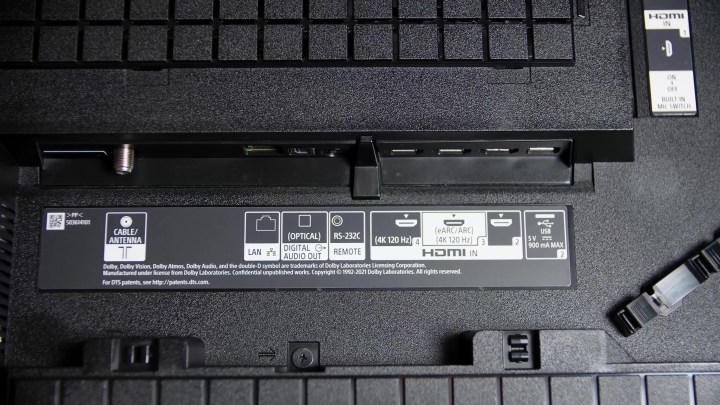
Christopher Watt writes: I’ve a TCL 65S450G and a Sony STR-DH790 linked to the eARC port. Not high-end, however I believed they’d the options I used to be searching for (4K HDR, and Atmos). The web (and my PS5 linked to the TV) is giving me some conflicting info on the eARC HDMI port on the TV, although. Are all eARC ports 2.1? Are all 2.1 ports eARC? This TV has eARC, however the documentation doesn’t state HDMI 2.1.
What connection format would I reap probably the most PS5 AV constancy advantages from with this setup?
I’m going to reply the extra particular questions immediately in a second. First, let’s reply a few the broader questions.
Are all eARC ports HDMI 2.1? No, they don’t seem to be. Most of them occur to be, however eARC does not want HDMI 2.1 bandwidth to do its job. eARC can move audio audio codecs over the 18 gigabits per second bandwidth supported by HDMI 2.0 b simply advantageous.
Are all 2.1 ports eARC? No, they don’t seem to be. I’ve by no means seen a TV with a couple of eARC port. However, extra importantly, the query of whether or not your eARC port occurs to be one in all your HDMI 2.1 ports comes up actually because many TVs solely have two HDMI 2.1 ports. And when one in all your HDMI 2.1 ports can also be your eARC port, that may restrict the variety of HDMI 2.1 gadgets you possibly can join on to your TV. TCL is without doubt one of the solely manufacturers I can consider that gives two impartial HDMI 2.1 ports and retains the eARC operate separate.
You solely want to fret whether or not your eARC port is HDMI 2.1-capable for 2 causes. One is when you have a couple of HDMI 2.1 gadget that you just wish to join on to your TV. The opposite is that if your AV receiver is HDMI 2.1 and you’re connecting a PS5, Xbox Sequence X, or a high-end PC to that receiver, then you definitely’d want full HDMI 2.1 bandwidth out of your eARC port. If that’s not you, then don’t fear about it.
For this particular scenario, neither your Sony receiver nor your TCL TV helps HDMI 2.1 — which isn’t the tip of the world, you possibly can nonetheless get 4K 60 fps and all of the HDR codecs via your receiver, you simply can’t do 4K at 120 fps. Nevertheless, since your receiver doesn’t help eARC, if you need the most effective audio high quality, you need to run your PS5 to your TV via the receiver to get the most effective Dolby Atmos sound. Nevertheless, if preserving lag to absolutely the minimal is extra vital, then join the PS5 to your TV. You’ll nonetheless get Atmos, simply not uncompressed Atmos. You’ll additionally get DTS, however not uncompressed DTS.
MLA QD-OLED

Akash writes: We’ve seen how unimaginable MLA and QD-OLED panels are. Do you may have any perception on after we might probably see a TV that makes use of each of those applied sciences to get a TV with QD-OLED colours with MLA brightness?
Nicely, I’m afraid the reply is that we are going to by no means see that occur, however maybe not for the explanations some would possibly assume. At first blush, it’d appear to be we’d by no means see MLA make it to QD-OLED as a result of LG Show owns MLA and Samsung Show owns QD-OLED, and people two rivals aren’t going to share tech. Nevertheless, we’ll by no means see MLA paired with QD-OLED as a result of QD-OLED, from a technical perspective, wouldn’t profit in any respect from MLA — or Micro Lens Array — expertise.
MLA expertise was developed by LG Show to beat inefficiencies which can be inherent to LG’s WRGB OLED panels. In a standard WRGB OLED panel, there are layers that trigger gentle to scatter — gentle that’s primarily misplaced. MLA prevents that gentle from getting scattered by routing it straight out via the panel in order that it reaches our eyes.
QD-OLED panels don’t undergo from gentle scatter as a result of they don’t have a number of the layers that W-RGB OLED panels do -– for instance, a QD-OLED panel has no shade filter. So, MLA can be a ineffective layer in a QD-OLED TV.
For what it’s value, the brightness variations between MLA OLED and QD-OLED are fairly slim. I get the best-of-both-worlds thought — it’s simply that these two worlds can by no means meet.
Editorially, I’ll add that I believe OLED -– whether or not MLA or QD-OLED, has gotten about as vivid as it’ll ever get. That’s until a TV producer decides it isn’t going to fret about burn-in danger anymore and rolls again the brightness limitations they’ve imposed on OLED TVs. One thing tells me that’s not going to occur. For a brighter OLED-like image, I believe we have to see micro-LED shows applied in normal-sized client TVs or emissive quantum dot show expertise deployed. And I believe we could be near each, really.
Editors’ Suggestions
Supply Hyperlink : Lowongan Kerja 2023


